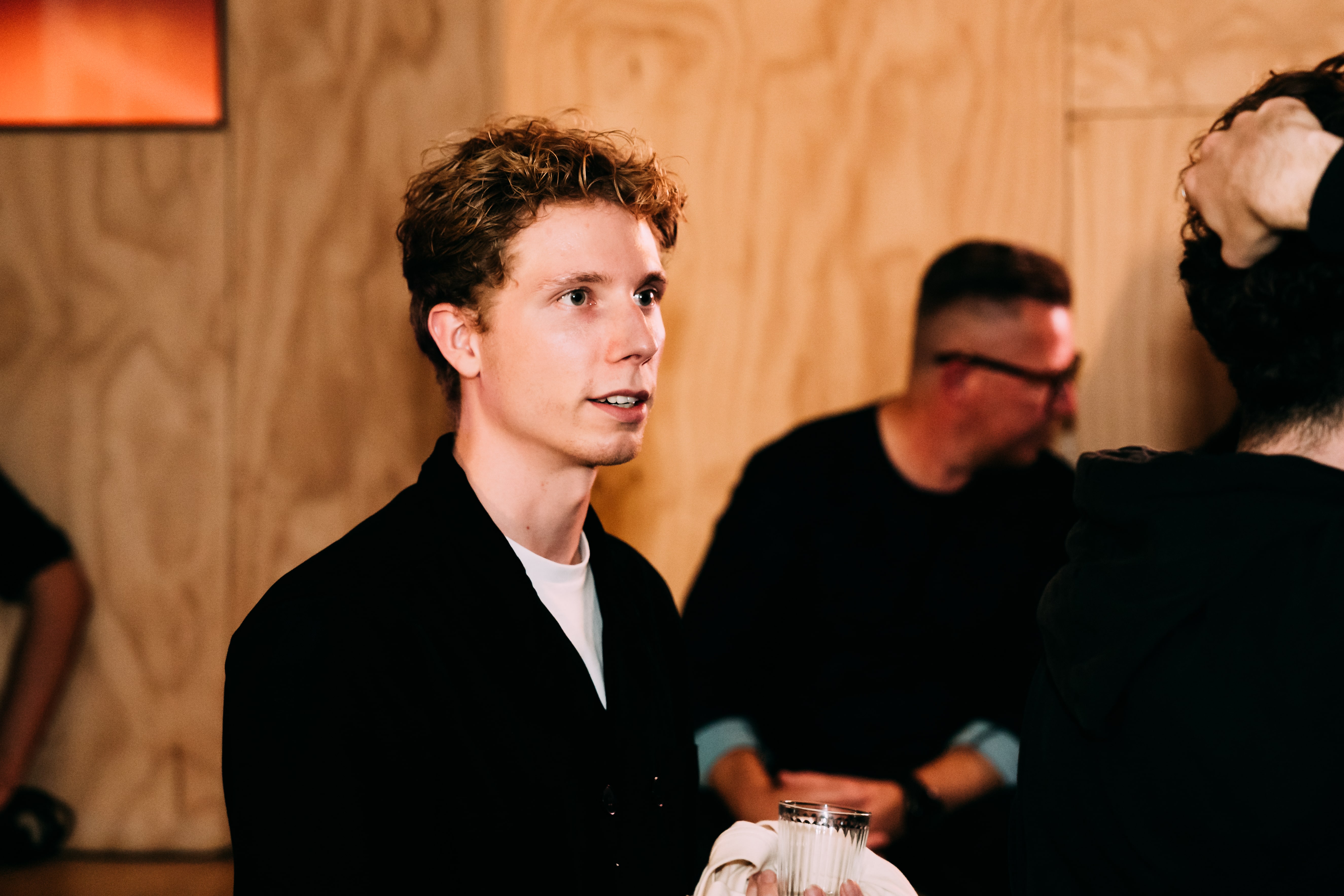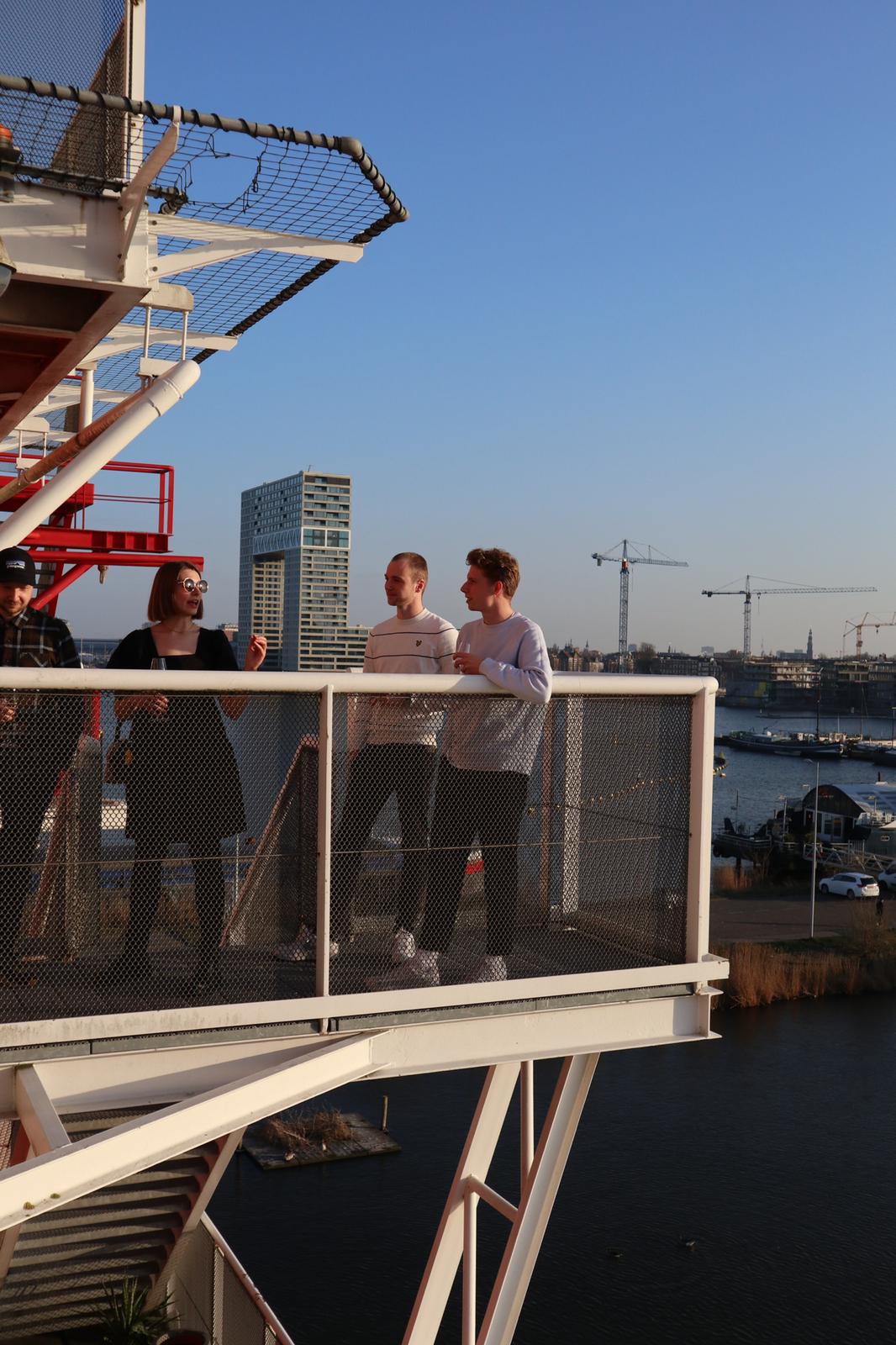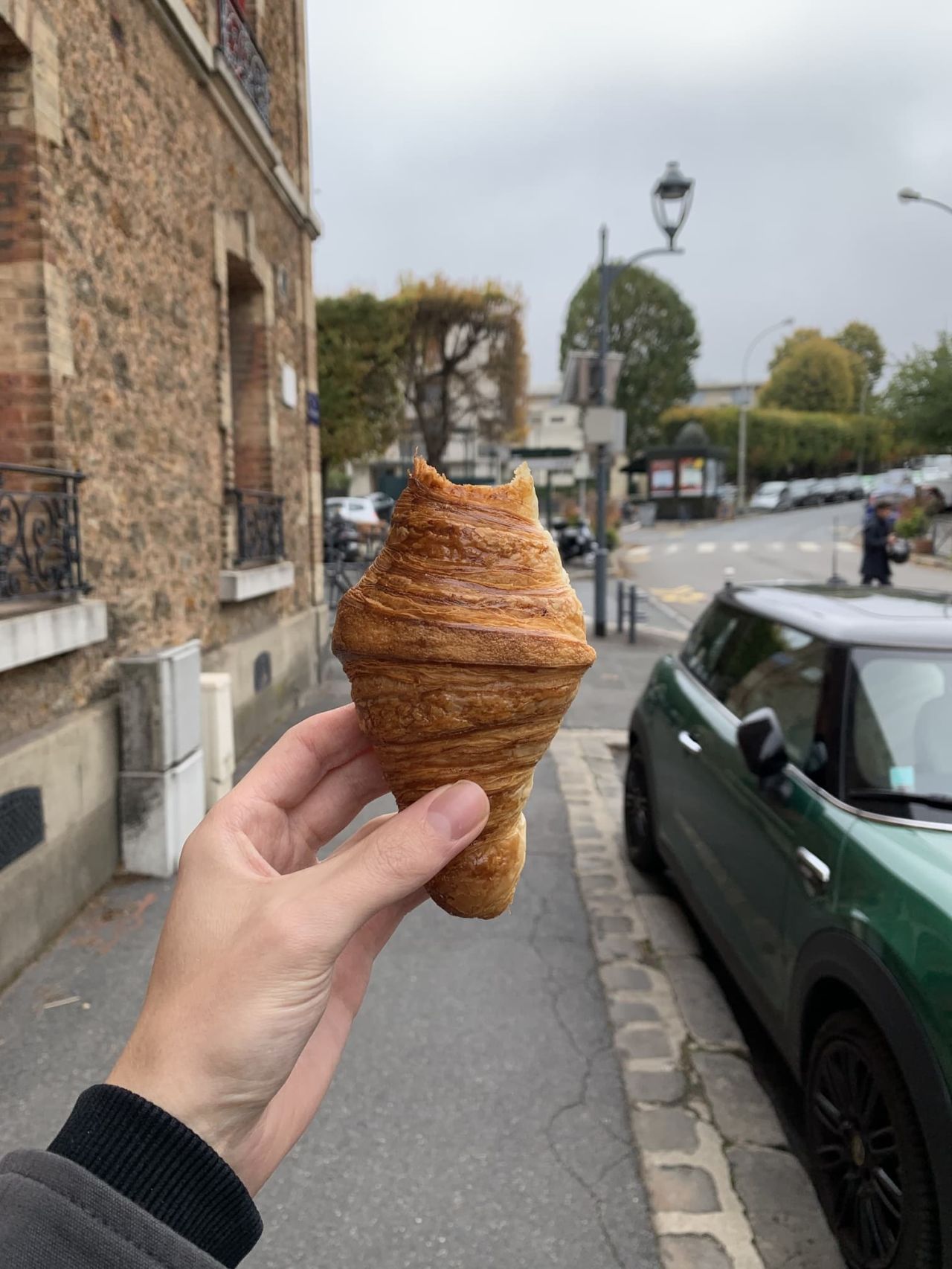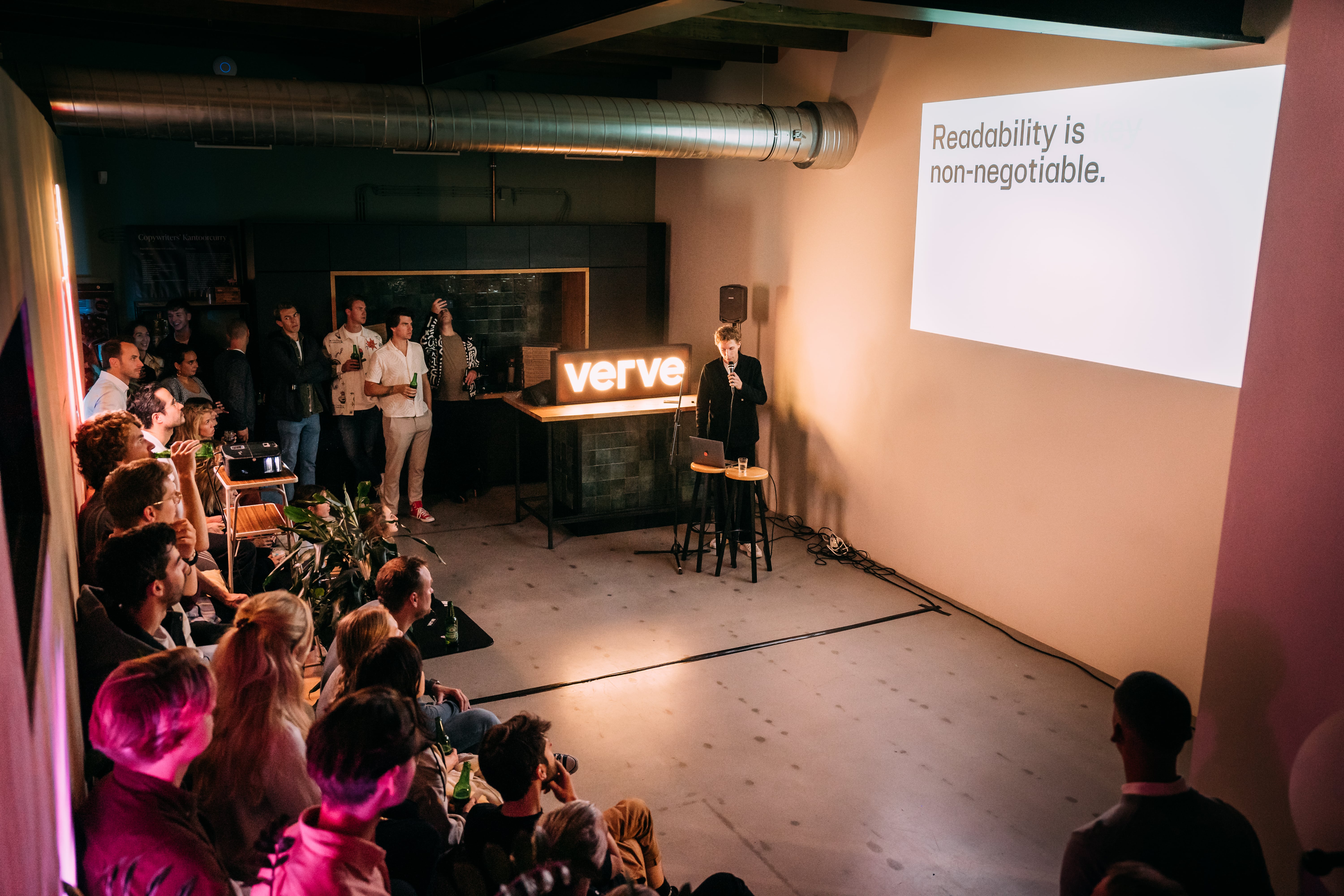With his knowledge of typography and his love for cooking, Bram creates digital experiences that are planet centered. Whether he’s working from Paris, Bern or our Amsterdam studio – he knows how to satisfy user needs, client goals and our team’s inspiration level. We spoke with him about type, stepping out of your bubble and looking at the bigger picture.
If you weren’t a Digital Designer, what career would you have?
As a young kid, I always looked through my dad’s architecture books. I loved it: the buildings, the designs. It became my career goal. Until I realized you have to be good at math and economics, that was.If I had to answer this question now, I’d say a chef at a restaurant. There’s a lot of similarities between being a chef and a designer. You’re assembling a dish, making many things happen, you’re creative with combinations of colors and flavors and you have a result to present. Something someone else can enjoy.
Design is one thing, but flavor and structure is something completely different. It’s something you don’t have in design, right? At least, not at the same level.
Design is more visual, yes. That’s why I think food is such a deep concept. So many senses are stimulated at the same time.

What’s your favorite dish to cook?
Haha, a lot of people ask me that question. I like really good pasta: aglio e olio, simple but flavorful. Or a really nice steak with sautéd potatoes. Cooking doesn’t need to be complicated – it needs to be good. Just like design, actually.
Bram Naus, Digital Designer at Verve
Cooking doesn’t need to be complicated – it needs to be good. Just like design, actually.
Next to being a chef and a designer, you’re also really into type. Did you get into design first or was it love at first type?
I was always scared to go into type, because I knew it is such a deep field. It’s a whole different ball game. So, first design then type.
What made you not be scared of diving into type?
Just doing it. Really simple to say, harder to do. My fear came from wanting to become better in what I was already doing: digital design. I was neglecting that I could also just have fun. Even though type is fun to me, I was holding myself back because I thought I couldn’t master it. With the idea that it was just for fun, I actually started doing it. I’d suggest someone in the same position to not overthink and just get going with it.

You’re saying type teaches you more about design. What do you think a designer with little type knowledge is missing out in their designs?
The ability to recognize typography and how it feels to the user. Getting into type will teach you a lot about the differences in styles and character. You establish a type library to be able to communicate the right feeling. You’ll learn more about letter forms and design in general: contrast, hierarchy, functionality and so on. It makes you become better at expressing yourself or a brand.
I can imagine, while you’re designing at Verve, you’re also thinking of type when looking at a design from both a brand and digital perspective. How do you use your love for type in your work at Verve?
I often come in and look at typography: suggest it, stress test it and see if it meets all requirements. It could be that there are limitations: a client who needs to be able to use the type in Google Slides, for example. That’s a fun challenge.
Bram Naus, Digital Designer at Verve
Knowing your typography makes you become better at expressing yourself or a brand.
Brand and digital collaborate a lot. You are, as we speak, working from Paris. What are the positives and negatives of working abroad?
You’ll gain a lot of experience and inspiration when working from another country. You’re exploring cultural stuff that you wouldn’t see in your hometown. I certainly miss going to the office sometimes: collaborating in person is still the best, to me. But nowadays remote working has improved so much that these things are possible. It’s a nice mix of workplaces. You break out of your usual bubble and flow to get a fresh look at things. Especially a city like Paris: there’s a lot of art, fashion, history. Everywhere around you. To me, that’s a lot of creative inspiration.


Other than the tasty croissants, what’s the one thing this experience with you brought you that you take with you every day?
I should do this more often. At first, it’s a bit of a hassle to schedule things, but you do really break out of your bubble and get a new perspective of things.
For many, doubt takes over when wanting to live in another place. How do you think people can step out of their comfort zone to go anyway?
Think of someone you know who is living in a different city. Many people do know someone living abroad in Europe or beyond. See if you can schedule some time to actually go to that place and stay there. It brings you together while also being able to enjoy the new surroundings.
Back to design: how do you see the future of digital design?
One thing I always say is: branding is digital and digital is branding. I think that’s only going to become more relevant. The amount of screens and moving images will only get bigger and better.
Digital has so much room to grow: both practical and emotional. Branding and digital can really get each other to another level when working together.
Verve is a digital branding agency. If you’re not working with that combination, you have some catching up to do.

Sometimes, there’s a completely new product or target group and you have no idea how users will react to it. How do you test and know you and the client are going in the right direction?
It’s a two sided thing. Working together with the client means having to complement each other’s knowledge. A designer needs to ask in-depth questions and extensive research to get to know the client and its users.
The client will sometimes come up with something they want, but don’t need. Then it’s a designer’s responsibility to tell them what they do need – from a user perspective.
Bram Naus, Digital Designer at Verve
The client will sometimes come up with something they want, but don’t need. Then it’s a designer’s responsibility to tell them what they do need – from a user perspective.
You want to satisfy the client, but also meet the user’s needs. Sometimes, you can’t satisfy both. What way do you choose?
That’s a good one. I believe you always have the responsibility to step up for the user. Looking at the bigger picture, both the client and us want to serve the user. Sometimes, a client gets lost in its own goals. In that case, you’d need to challenge the client to look at the bigger picture: the user, the planet and themselves. It’s art to be able to combine user needs, client goals and breath-taking design. It’s not a one way street though – you’ll always have to get to a decision together.
Do you believe branding is digital and digital is branding? Come work at Verve
